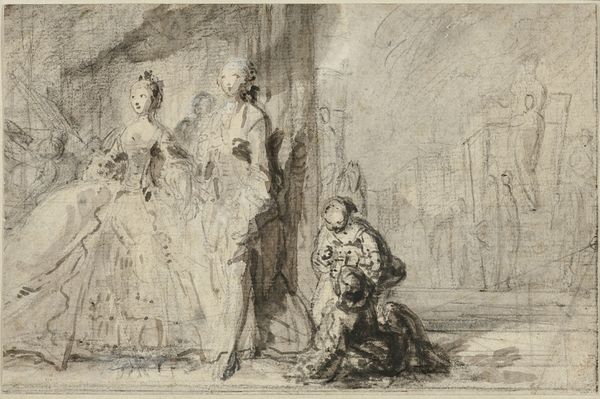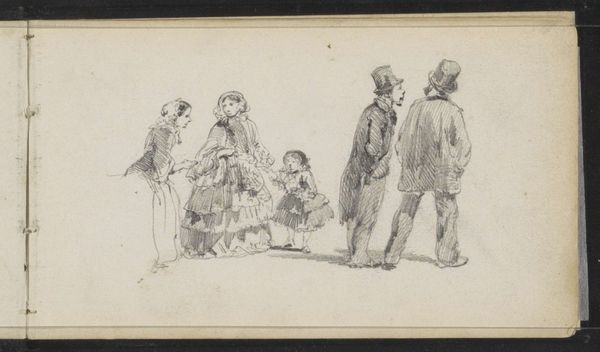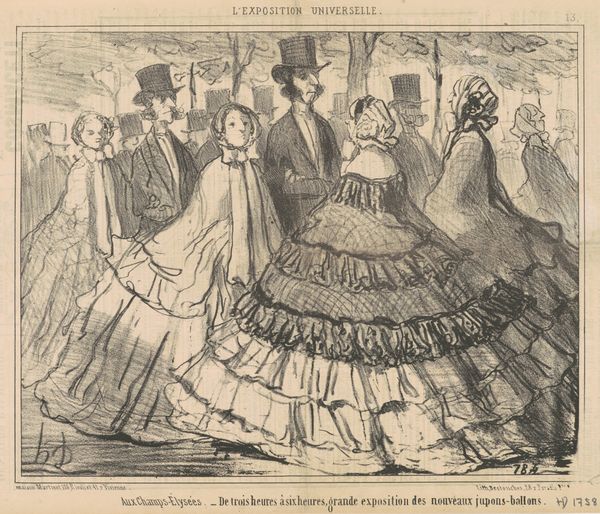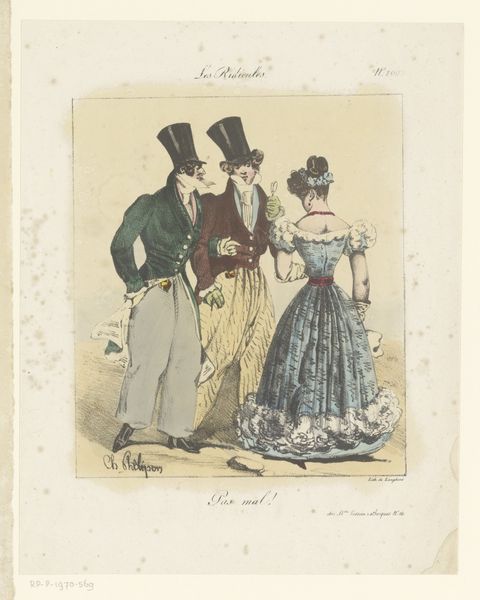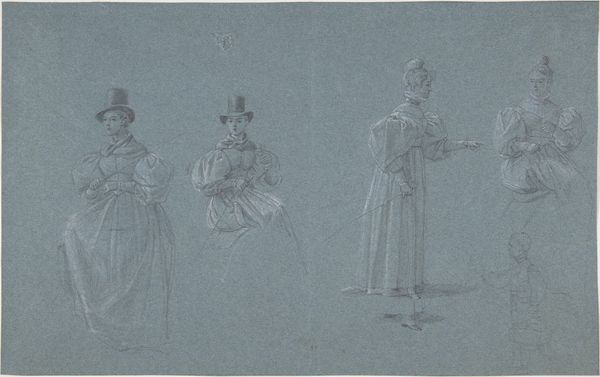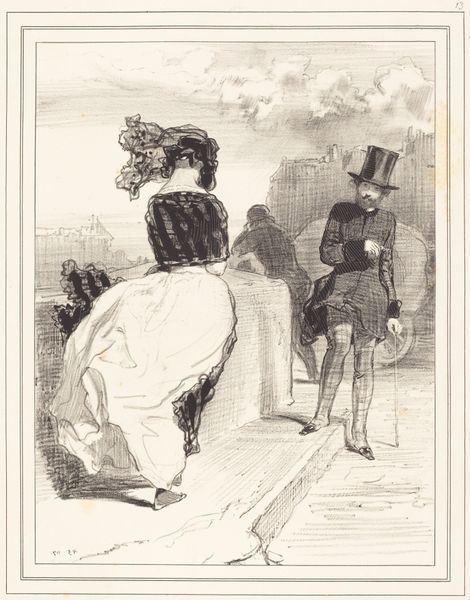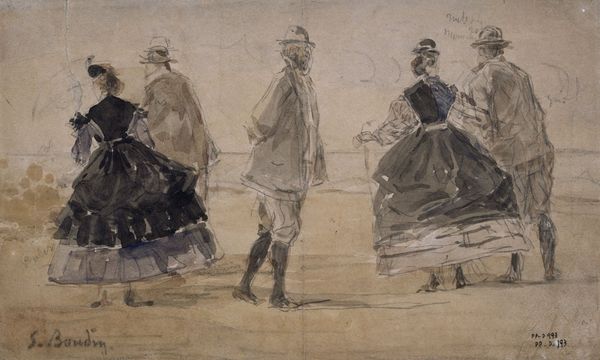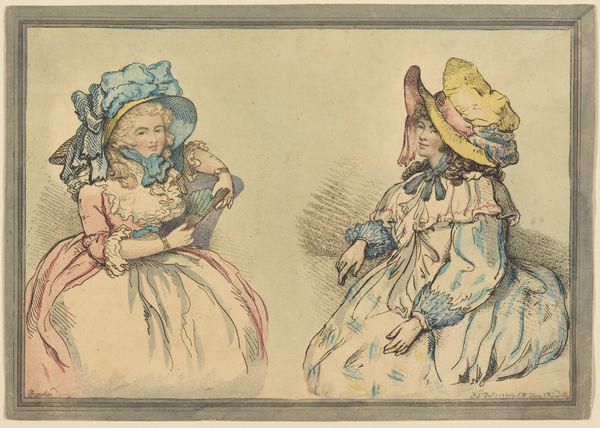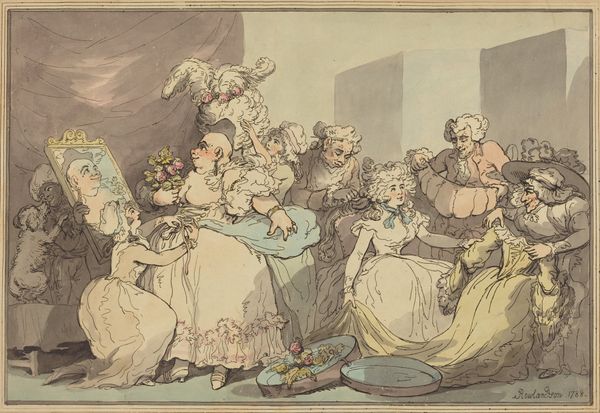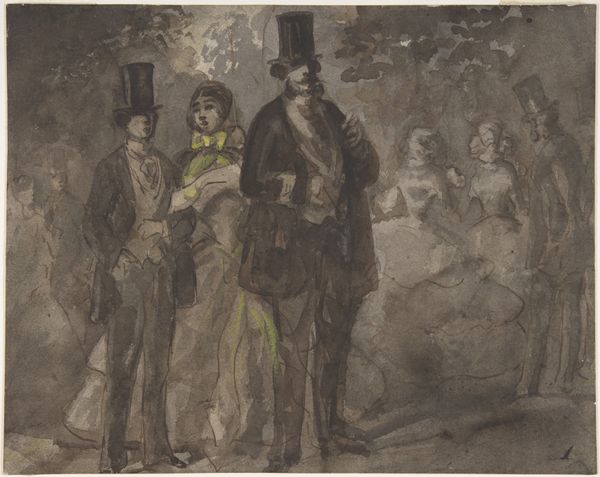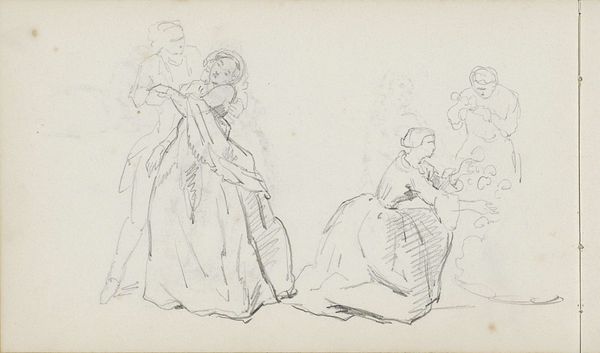
drawing, print, plein-air, watercolor
#
drawing
#
flâneur
# print
#
impressionism
#
plein-air
#
watercolor
#
france
#
men
#
park
#
cityscape
#
watercolour illustration
#
genre-painting
#
watercolor
Dimensions: 8 9/16 x 11 13/16 in. (21.7 x 30 cm)
Copyright: Public Domain
Curator: "Meeting in the Park," a watercolor drawing created sometime between 1855 and 1865 by Constantin Guys. There's something fleeting about it, like a sketch capturing a brief moment. How do you see this work? Editor: The loose application of watercolor really emphasizes the luxurious materials the figures wear, especially the women’s dresses and the men's hats. There is a sense of production involved in each. What can we tell about French society based on this piece? Curator: The emphasis here, for me, falls on the accessibility of image production. Guys was making and selling these works as records of contemporary fashion. Notice the mass production indicated by repetitive imagery—carriages in the background and repeated figures show what he might be selling and reproducing to create his income. Does the context in which this artwork was produced impact your interpretation? Editor: It does! Knowing Guys made these to record fashion really places emphasis on consumption, on French citizens wanting access to imagery of luxurious dress. And even on the labor required to *make* that dress! Curator: Precisely. He is known as the quintessential 'flâneur', capturing street life. The sketch-like nature almost points to a factory line. He's producing an image to reproduce through prints. Is it high art or simply industry? Where would you draw the line, and why? Editor: I am not sure! Is there an element of social commentary or criticism by capturing and distributing them in this way, considering access for those who maybe cannot afford the items of dress displayed? Curator: A great point. Consider the economics of his subject matter versus the price point of his watercolors or prints. That tension is central to Guys’s production. Thinking about the means by which people consumed his work and, in turn, how that shapes our understanding of social strata in Second Empire France seems key here. Editor: I never thought about that element when I consider a flâneur figure! Now I am considering what it means to record fashionable city life and reproduce the images. Thanks! Curator: Indeed! Examining the process really opens a new world for understanding images.
Comments
No comments
Be the first to comment and join the conversation on the ultimate creative platform.

